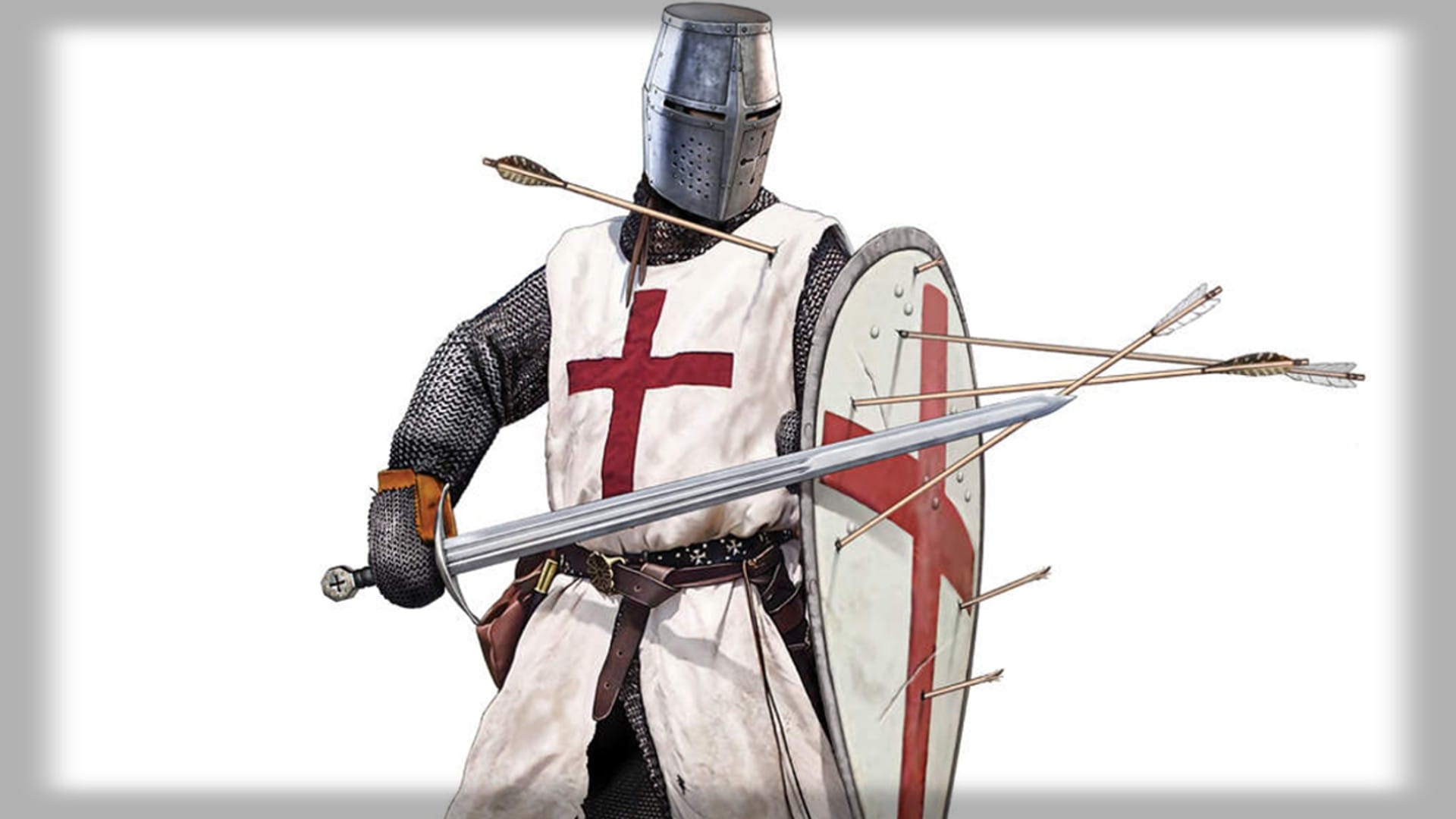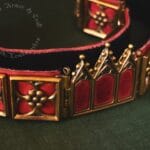The Iron Fist of the Teutonic Knights
The Teutonic Knights, formidable warriors of the Baltic Crusades (c. 1200 AD), were renowned for their discipline and armor. A crucial component of their protective gear was the gauntlet, an armored glove that provided both protection and offensive capability. While no gauntlets specifically dating to 1200 survive, examining similar 13th-century examples suggests what these “iron fists” likely looked like and how they functioned.
Deconstructing the Teutonic Gauntlet
The 13th century marked a shift from chainmail to plate armor, and gauntlets evolved alongside this trend. Rather than simple gloves, they were intricate works of art, fashioned from carefully shaped iron plates designed for both hand protection and a secure grip. These plates likely deflected blows that would have otherwise shattered bone, and their design probably enhanced a knight’s ability to wield swords and maces with greater force and precision. Decorations on the gauntlets may have signified the knight’s status and beliefs. Although definitive proof is lacking, it’s probable that Teutonic Knights, facing fierce opponents like the Lithuanians and Poles, possessed gauntlets representing cutting-edge technology of the time. Their survival likely depended on such advancements.
Knights Templar vs. Teutonic Knights: Decoding the Key Differences Between Medieval Military Orders
Both the Knights Templar and the Teutonic Knights arose during the Crusades, yet their missions, geographies, and legacies differed significantly. Understanding these distinctions provides valuable insight into the medieval world.
Distinct Missions, Shared Faith
While united by their Christian faith, the two orders pursued distinct aims. The Templars, founded around 1119, primarily focused on protecting pilgrims traveling to the Holy Land and defending Christian holdings against Muslim forces. Their base of operations centered in the Levant, a region of immense religious and strategic importance. The Teutonic Knights, established in 1190 during the Siege of Acre, initially offered hospital services. However, they later shifted their focus to Northeastern Europe, undertaking campaigns to convert pagan tribes, expand Christian territory, and confront Eastern Orthodox powers. This geographical shift highlights a key difference in their core missions.
From Holy Land to Baltic Shores: Theaters of Operation
The distinct missions led to different theaters of operation. The Templars’ engagements centered on the Holy Land, participating in key battles like the Siege of Damascus and the Battle of Hattin. They held strategic fortresses, including Acre, a vital port city. In contrast, the Teutonic Knights focused on the Baltic region, waging campaigns against pagan Lithuanians and Old Prussians, and later clashing with the Kingdom of Poland at the Battle of Grunwald (1410), a decisive defeat that marked a turning point in their power. This eastward shift geographically separated them from the Templars and shaped their specific challenges and opportunities.
Financial Powerhouse vs. Territorial Empire: Sources of Power
The Templars developed innovative banking practices, offering financial services to pilgrims, kings, and nobles. This led to vast wealth and considerable influence, but also made them a target for avaricious rulers. The Teutonic Knights, while also wealthy, derived their power primarily from territorial conquest and political control in Eastern Europe, establishing a feudal system and dominating conquered lands. This difference in financial focus is crucial for understanding their relationships with secular powers and their eventual fates.
Rise, Fall, and Lasting Influence: Divergent Legacies
Both orders experienced dramatic rises and falls, leaving distinct legacies. The Templars, after achieving prominence, met a sudden and controversial end. Accusations of heresy, fueled by King Philip IV of France, led to arrests, torture, and the eventual dissolution of the order in 1312. Their dramatic demise, shrouded in mystery, continues to fuel speculation and inspire countless stories. The Teutonic Knights, while also facing decline, enjoyed a longer lifespan, exerting significant influence on the history of Northeastern Europe, especially Prussia and Germany, until their decline in the 15th and 16th centuries. Understanding their distinct trajectories provides important insights into the shifting political and religious landscapes of medieval Europe.
Did King Philip IV of France Destroy the Knights Templar?
The demise of the Knights Templar is a complex historical event, and the role of King Philip IV of France is central to unraveling this intriguing chapter of medieval history. While unanswered questions remain, much suggests that Philip IV was the driving force behind the order’s downfall.
A King’s Ruthless Ambition
Philip IV, known as the “Iron King,” was a ruthless and ambitious monarch determined to centralize power within France. This drive for greater control put him on a collision course with the Knights Templar, an independent and powerful order with considerable wealth and influence across Europe. His actions against the Templars likely reflected his broader ambition to assert royal authority over established institutions, both religious and financial. Some historians believe he saw them as a threat to his sovereignty.
Financial Troubles and Royal Greed
Philip IV’s costly wars against England and Flanders plunged him into debt. He owed substantial sums to the Templars, which likely fueled his desire to seize their wealth. While this financial motive probably played a significant role, it’s unlikely to be the sole explanation for his aggressive actions. His desire to consolidate power and eliminate a potential rival within his kingdom likely contributed to his decision.
A Web of Accusations and Political Maneuvering
On Friday, October 13, 1307, Philip IV, in coordination with Pope Clement V, launched a coordinated arrest of Templars throughout France. The charges leveled against them included heresy, blasphemy, idolatry, and sexual misconduct. Historians generally agree that these charges were largely fabricated, based on confessions extracted through torture and coercion. Philip’s ability to manipulate the situation to his advantage speaks to his political savvy and ruthlessness.
The Papacy’s Complicity and the Order’s Dissolution
The role of Pope Clement V in the Templars’ demise remains a subject of debate. While he formally dissolved the Knights Templar in 1312, it’s probable that he acted under immense pressure from Philip IV. Clement had moved the papal court from Rome to Avignon, France, placing it firmly within Philip’s sphere of influence. This relocation significantly weakened the papacy’s independence and likely made it difficult for Clement to resist Philip’s demands.
A Legacy of Mystery and Intrigue
The swift downfall of the Knights Templar and the mysterious disappearance of their wealth have fueled centuries of speculation and conspiracy theories. While Philip IV’s precise motives may remain unclear, historical evidence strongly suggests he was instrumental in their demise. Current research continues to explore the complex interplay of factors that led to this dramatic event, further enriching our understanding of the late medieval world.
Did the Knights Templar Find the Holy Grail?
The question of whether the Knights Templar discovered the Holy Grail continues to captivate our imaginations. The connection, however, is rooted more in legend than historical fact. While definitive answers remain elusive, exploring the origins of this enduring myth provides valuable insight into the power of storytelling and historical interpretation.
The Grail’s Elusive Nature
The Holy Grail itself holds a fluid definition. Depending on the source, it is described variously as the cup used by Jesus at the Last Supper, a platter, or even a symbolic vessel containing spiritual wisdom or divine knowledge. Regardless of its form, the Grail holds profound significance within Christian mythology, representing sacred purity, miraculous powers, and spiritual enlightenment.
The Genesis of the Myth: Wolfram von Eschenbach’s Parzival
The association between the Knights Templar and the Holy Grail emerged in early 13th-century literature, most notably Wolfram von Eschenbach’s epic poem Parzival. In this fictional work, a group known as the “templeisen” guards the Grail. Scholars believe this term may have been inspired by the real-life Knights Templar, inadvertently forging a link in the popular consciousness. This literary connection, though fictional, played a crucial role in shaping later perceptions.
From Fiction to Speculation: The Templars’ Activities in Jerusalem
Adding further intrigue to the myth was the Templars’ presence in Jerusalem and their excavations around the Temple Mount. While their actual discoveries remain unclear, their association with this sacred site fueled rumors of hidden treasures. This environment of secrecy and whispered tales contributed to speculation about a potential Templar discovery of the Holy Grail.
The Power of Mystery: A Lack of Historical Evidence
Despite captivating narratives, there is no concrete historical evidence to substantiate claims that the Templars found or possessed the Holy Grail. Their secretive nature and dramatic downfall, combined with the Grail’s symbolism, provided fertile ground for the growth of legends. This lack of evidence, ironically, has only deepened the enduring mystery and fueled ongoing speculation.
The Unraveling of a Myth: A Quest for Understanding
While the Templar-Grail connection remains firmly within the realm of myth, the enduring fascination with this story underscores how history, legend, and imagination intersect. Ongoing research helps separate fact from speculation, allowing us to appreciate both the powerful allure of this enduring myth and the importance of rigorous historical inquiry. Perhaps, the true value of the legend lies not in its factual accuracy, but in the questions it prompts about faith, history, and the human desire to uncover the secrets of the past.
















1 thought on “Teutonic Knights’ Gauntlets c. 1200: Iron Grip of the Baltic Crusade”
Comments are closed.